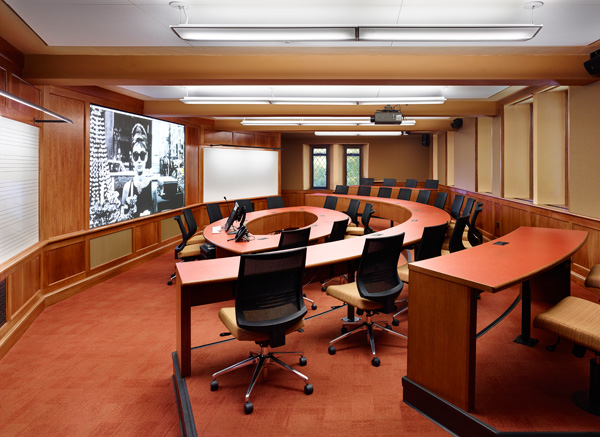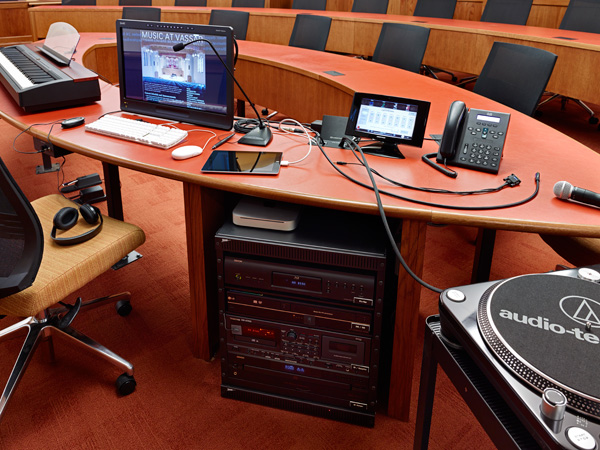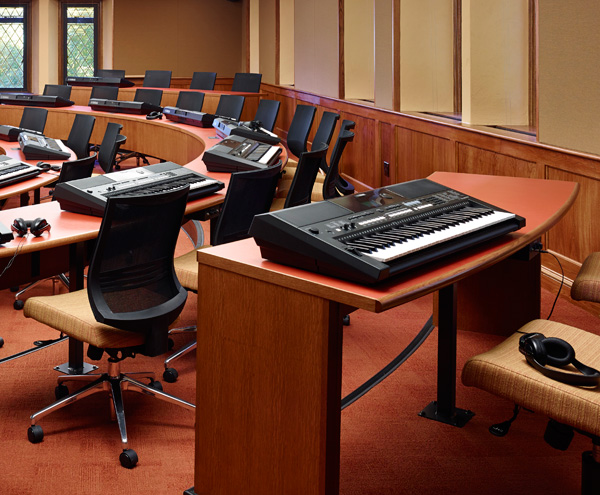Soundscapes: The Listening Classroom
Vassar faculty members are continually searching for innovative approaches and technologies to enhance their teaching of the liberal arts. But sometimes breaking out of the mold is as simple as providing the right environment.

Take the Listening Classroom, located in the George Sherman Dickinson Music Library in Skinner Hall. The specially designed space offers superior acoustics and 360-degree high-definition sound, screen-capture technology, sound manipulation tools, and a high-definition projector.

That may just sound like bells and whistles, but Justin Patch, a post-doctoral fellow in the Music Department, says, these tools change the student’s experience of the class.
This fall, he is using the full capabilities of the space in the new course “Soundscapes,” geared toward examining how we hear and perceive sound. Using hand-held recorders, students go outdoors to capture a variety of birdcalls and night sounds. Playing them back in class, Patch says, students notice much more about the rhythms of nature than ever before.

Students also analyze advertising soundtracks and create their own to discover how variations in sound change the perception of the visual elements. They observe the use of sound in film—for instance, listening to the differences between Star Wars' 2D and 3D soundtracks. They use audio software to sample popular music, and then recombine the clips to form their own “mashups.”
The Learning Classroom is enabling these kinds of hands-on explorations in courses from music to film.

Other features that facilitate teaching include styluses that enable professors to write on a video screen to highlight key changes, say, or the entrance of certain musical instruments in scores. And plug-and-play keyboards help students grasp the mechanics of music theory right by exploring the notes right from where they sit.
“The space just allows us to teach in a more spontaneous, more engaged, and more flexible manner, ” says Patch. “It leads to a much more fulfilling hands-on experience.
